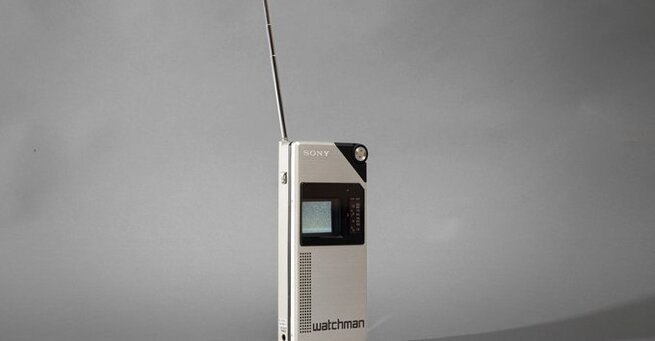Alerts

Few gadgets capture the spirit of innovation quite like the Sony Watchman. The Sony Watchman was must-see TV during its era — a groundbreaking moment when Sony dared to put a moving picture screen into people’s pockets. Long before smartphones and streaming, this pocket-sized marvel made television truly mobile for the first time.
To understand what made the Watchman iconic, it helps to travel back to 1982. Television wasn’t just content; it was furniture. A bulky wooden box sat in the center of every living room, dictating when and where you could watch. Then Sony changed everything.
The company, already riding high from the success of the Walkman, saw a new frontier in visual media. Just as the Walkman made music personal, the Watchman aimed to make TV personal — and portable. It was bold, futuristic, and a little bit rebellious.
The Watchman wasn’t the world’s first portable television, but it was the first that truly worked. Competing devices from Casio and Sinclair tried, but Sony’s innovation — the Flat Display Picture Tube — made the Watchman stand out.
This unique technology reshaped traditional CRT displays into a smaller, more compact form. The result? A handheld device you could sneak into meetings or quietly use during travel. It fit snugly in a large pocket, proving that convenience and technology could finally coexist.
Once the Watchman hit the market, it became a cultural symbol. People could tune into their favorite shows while on the move — from parks to subways. The concept of “TV anytime, anywhere” had officially begun.
Sony marketed the Watchman not just as a gadget but as an experience. It was about freedom, connection, and control — themes that would later define the digital age. The Watchman wasn’t only about watching TV; it was about redefining what watching meant.
Throughout the 1980s and 1990s, the Watchman evolved with new models boasting sleeker designs and improved reception. For nearly two decades, it remained a status symbol among tech lovers and travelers.
But beyond its hardware, the Watchman sparked important conversations. People wondered what it meant for society to be surrounded by screens. Would it isolate us? Would it bring us closer together? Those debates, first sparked by the Watchman, continue today in the smartphone era.
Though the Watchman eventually faded as technology advanced, its legacy lives on in every portable screen we use today. Smartphones, tablets, and even smartwatches owe a nod to Sony’s early vision of mobility and personal entertainment.
The Watchman showed that technology doesn’t just evolve — it transforms how we live, interact, and consume information. It laid the foundation for a future where the world truly fits in the palm of your hand.
For Sony, the Watchman was more than a product — it was a philosophy. It embodied the idea that entertainment should travel with you, breaking free from the living room and moving into everyday life.
Even now, decades later, the Sony Watchman was must-see TV for what it represented: innovation ahead of its time. It bridged generations, changed habits, and predicted a world filled with personal screens — long before anyone imagined YouTube or Netflix.
𝗦𝗲𝗺𝗮𝘀𝗼𝗰𝗶𝗮𝗹 𝗶𝘀 𝘄𝗵𝗲𝗿𝗲 𝗿𝗲𝗮𝗹 𝗽𝗲𝗼𝗽𝗹𝗲 𝗰𝗼𝗻𝗻𝗲𝗰𝘁, 𝗴𝗿𝗼𝘄, 𝗮𝗻𝗱 𝗯𝗲𝗹𝗼𝗻𝗴. We’re more than just a social platform — from jobs and blogs to events and daily chats, we bring people and ideas together in one simple, meaningful space.
